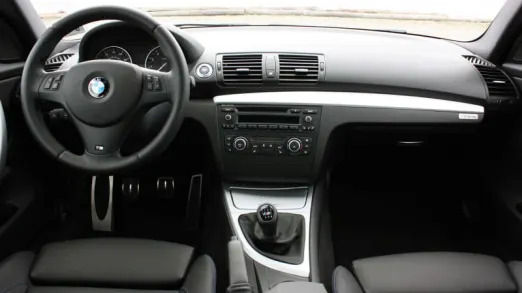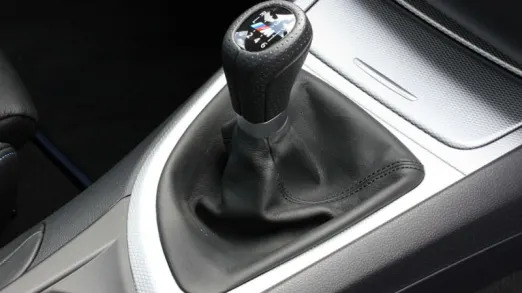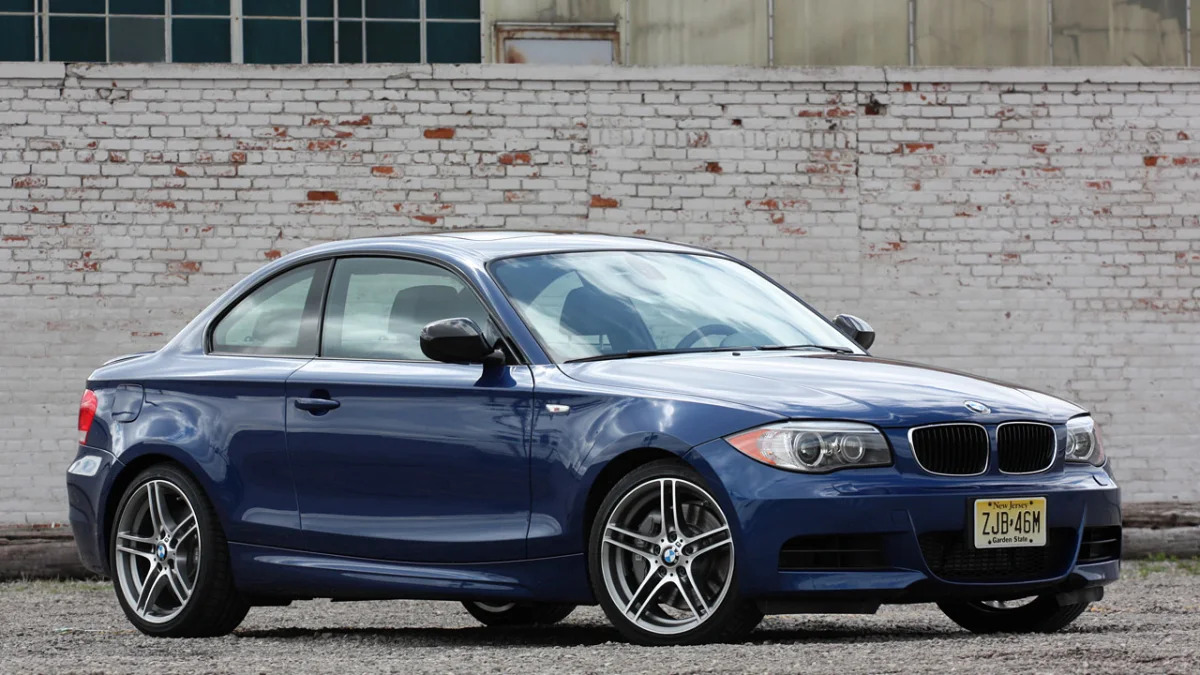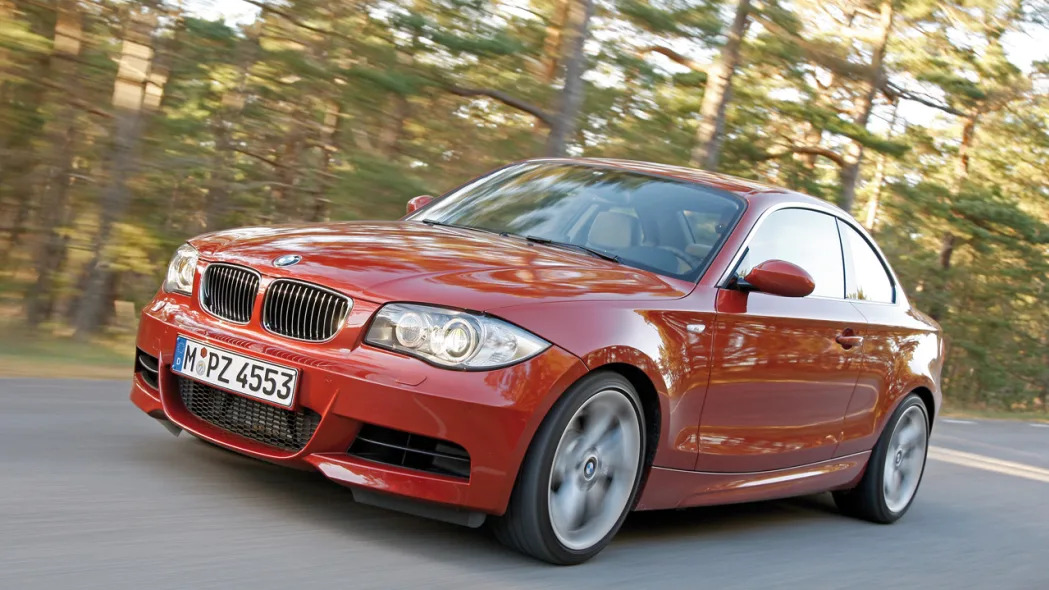There’s no (or little) argument that the BMW 2002 set the standard for small, agile, fun-to-drive cars when it came to life in the late 1960s. No less an authority on classics at the time, David E. Davis Jr., called it “one of modern civilization's all-time best ways to get somewhere sitting down.”
Comparisons may be instinctive and perhaps tiresome, but the brand’s 128i, launched in America in 2009, was not a 2002, so hold your fire for now. Considered at the time as a proper alternative to the over-populated 3 Series, however, the 1 was nonetheless hailed as a viable successor to the diminutive two-door coupe.
The cute coupe (there was a convertible version as well), which produced 228 horsepower and 200 pound-feet of torque, could be had in a more aggressive model as well: the 135i, with a turbo motor that upped the horsepower to 300 — and considered by many to be underrated from the factory. (Production of the 1 Series for the U.S. stopped in 2014; a third-generation 1 Series hatchback with front wheel drive went on sale in Europe in 2019.) Of course, the BMW 1M exists as the ultimate expression of performance for the 1 Series. It sported a 340-horsepower 3.0-liter twin-turbo inline-six, borrowed suspension, drivetrain and brake parts from other M cars and is generally hailed as one of the more interesting and desirable M cars produced throughout the performance division's history. That said, we're going to keep the focus on the far more affordable and plentiful 128i and 135i variants for this Future Classic.
Why is the BMW 1 Series a Future Classic?
Consider the equipment of the 128i: a compact, rear-wheel driver that bridged the market for both BMW enthusiasts and casual consumer. It had a straight six, naturally aspirated N52 engine, tight hydraulic power steering, three pedals, and an overachieving chassis.
Living with this two-door created few issues for drivers which, in car-speak, says volumes. As Motor Trend put it, the 128i “is just about everything a single person or a keen-driving couple could want in a sport coupe: athletic handling, super responsive six-cylinder powertrain, beautifully calibrated clutch pedal and shifter, highly communicative steering, supportive seats, well-controlled body motions, and a firm but perfectly damped suspension.”
The slightly shrunken dimensions of the 1 Series, compared to the 3, still offered a long hood and short rear deck, which gave it a beefy but at the same time rather feminine outline. Was it, in fact, ugly? Get serious. As one magazine noted, you’ll forgive the look the second you sit inside.
Inside, the cockpit had generous seating in the front, but adults in the rear found it cramped; in fact, the 1 was essentially a 2-plus-2 in that department. Visibility, though, was fairly good for a smallish coupe.
On the road, there was little debate about the 1’s dynamic attributes. They eclipsed the competition, and even convinced those who’d argued that only badge snobs embraced the 1 Series.
The Bavarians, who’d for a time resisted making a car smaller than the 3 Series, stayed with the coupe from 2007 until 2013.
What is the ideal example of the BMW 1 Series?
Roll the dice, and pick the 128i or the 135i.
Standard equipment offered with the 128i included 17-inch alloys, automatic headlights, rain-sensing wipers, automatic headlights, a leather-wrapped steering wheel and a 10-speaker audio system. As noted, it ran with a 3.0-liter 6-cylinder engine that produced around 230 hp and 200 pound-feet of torque.
Stepping up to the 135i trim level, the standard equipment included a tweaked suspension, 18-inch alloys, a sunroof, xenon headlights and automatic climate control, besides the features of the 128i. The engine was a 3.0-liter 6-cylinder that cranked out 300 hp and 300 lb-ft of torque.


Numerous optional packages were available for both trim levels, adding sport seats, a sport suspension, upgraded interior trim, mood lighting, Bluetooth connectivity, leather upholstery, a navigation system, a premium audio system, rear parking assist and heated front seats.
Be sure to check out our used vehicle listings; they can be helpful for finding a good deal. You can narrow the options down by a radius around your ZIP code, and be sure to pay attention to the deal rating on each listing to see how a vehicle compares with others in a similar area.
Are there any good alternatives to the BMW 1 Series?
Some obvious choices here would be the VW GTI, its pricier sibling the Audi TT, and, dipping down the price line, the Mazda3.
The GTI is, of course, the evergreen alternative in the price/size/power range, and you’d be certain to find manual transmission examples. Of course, the 1 Series is rear-wheel drive, which offers different (better) driving dynamics than much of the competition.
The Mazda3, fairly new in 2010, was roundly praised for its athletic handling and high-end interior. The steering was exceptional and the larger engine pumped nearly 170 horsepower.
In the used-car market, prospective buyers should expect to find 128i examples from 2009 to 2011 for $8,000 to $10,000 (of course, examples with the lowest mileage will sell higher), with the 135i version going at $2,000 or $3,000 more (again, depending on mileage). The late BMW 135is, with its 320-horsepower engine, may be the most desirable of the breed, but it's also very rare and thereby hard to come by.












Sign in to post
Please sign in to leave a comment.
Continue